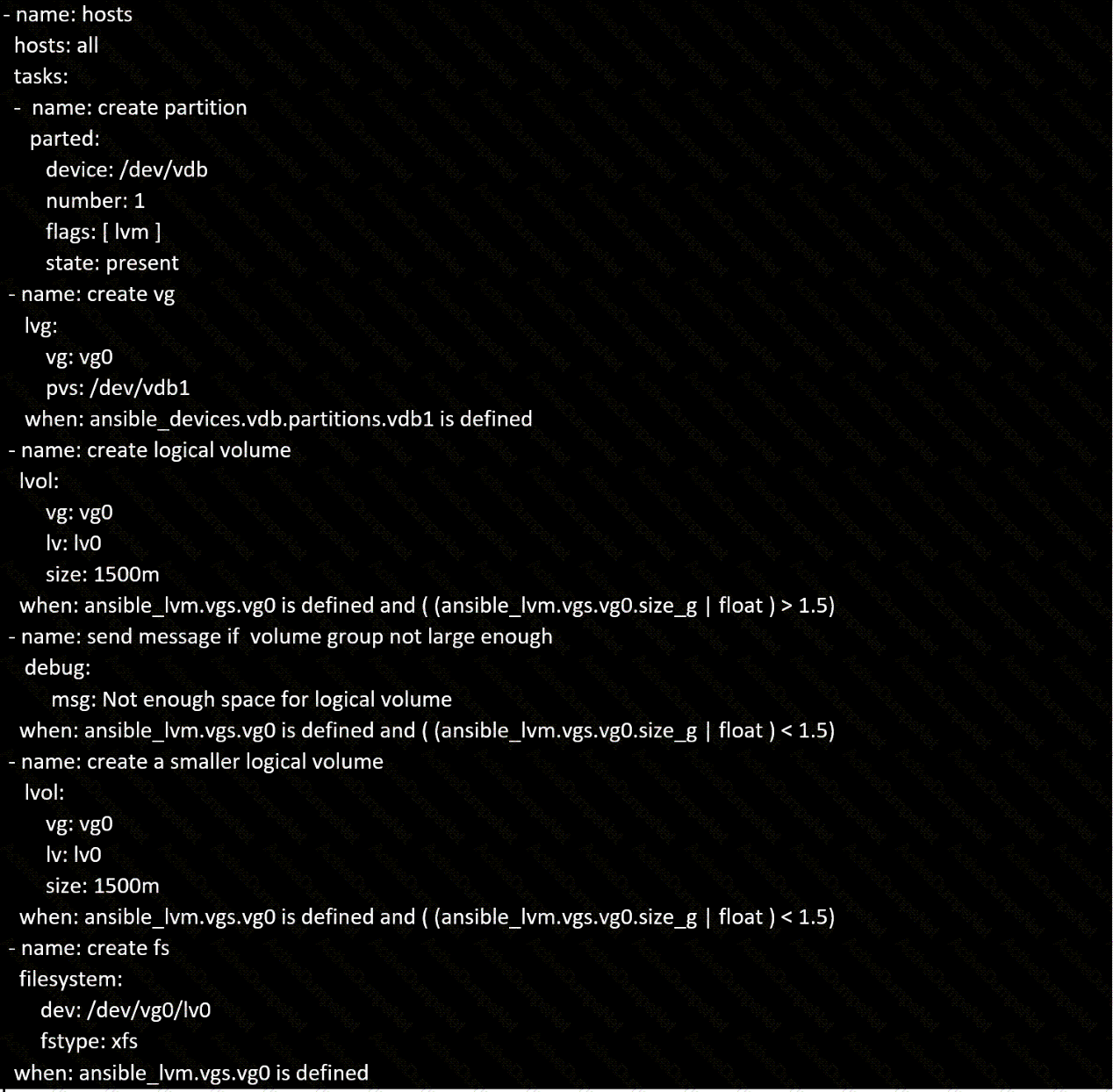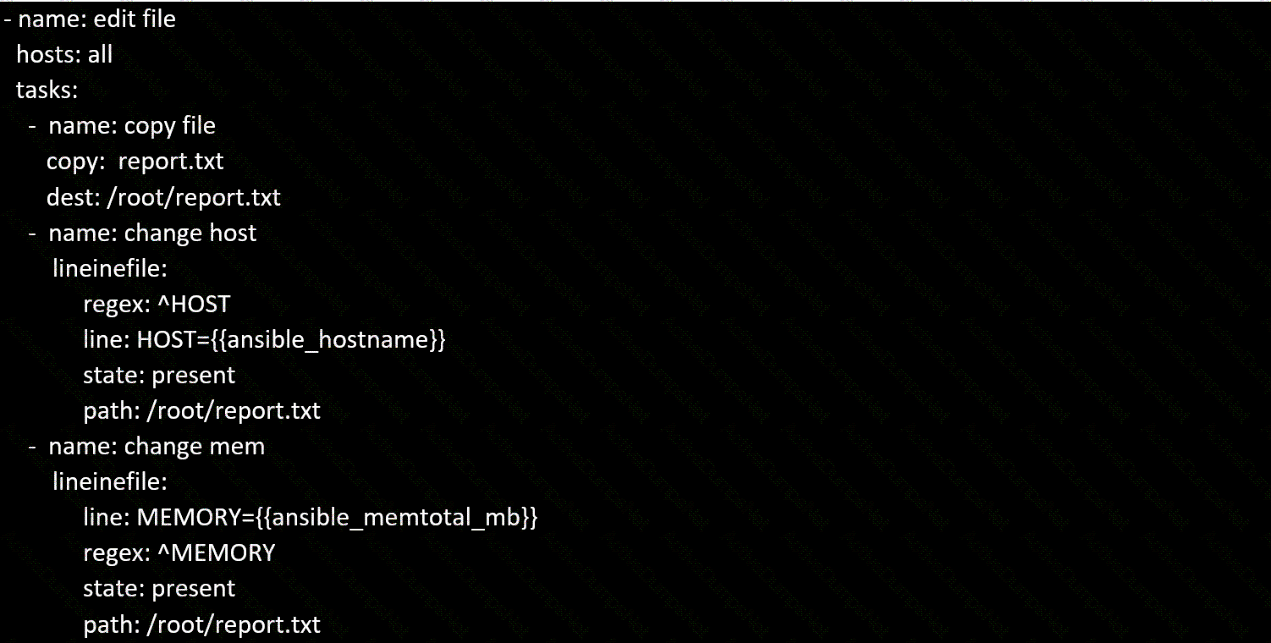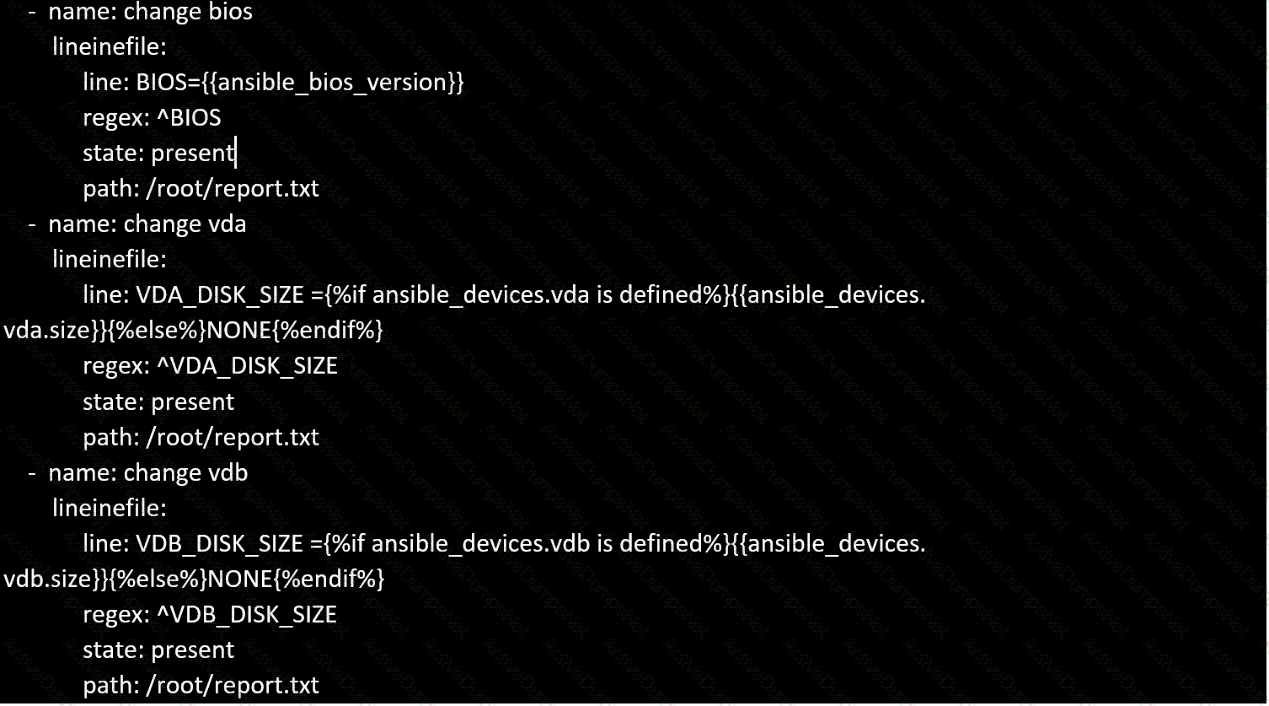RedHat EX447 Red Hat Certified Specialist in Advanced Automation: Ansible Best Practices Exam Practice Test
Red Hat Certified Specialist in Advanced Automation: Ansible Best Practices Questions and Answers
Create an empty encrypted file calledmyvault.yml in /home/sandy/ansibleand set the passwordtonotsafepw. Rekey the passwordtoiwejfj2221.
In /home/sandy/ansible/create a playbook calledlogvol.yml. Inthe play create a logical volume calledIv0and make it of size 1500MiB on volume groupvgOIf there is not enough space in the volume groupprinta message"Not enough space for logical volume"and then make a 800MiBIv0instead. If the volume group still doesn't exist, create a message"Volume group doesn't exist"Create anxfsfilesystem on allIv0logical volumes. Don't mount the logical volume.
Install and configure ansible
User sandy has been created on your control node with the appropriate permissions already, do not change or modify ssh keys. Install the necessary packages to run ansible on the control node. Configure ansible.cfg to be in folder /home/sandy/ansible/ansible.cfg and configure to access remote machines via the sandy user. All roles should be in the path /home/sandy/ansible/roles. The inventory path should be in /home/sandy/ansible/invenlory.
You will have access to 5 nodes.
node1.example.com
node2.example.com
node3.example.com
node4.example.com
node5.example.com
Configure these nodes to be in an inventory file where node I is a member of group dev. nodc2 is a member of group test, node3 is a member of group proxy, nodc4 and node 5 are members of group prod. Also, prod is a member of group webservers.
Using the Simulation Program, perform the following tasks:
Ad-Hoc Ansible Commands (Number Two) Task:
1.Use the ad-hoc command to make sure php is installed.
2. Use the ad-hoc command to make sure that php is installed and is the latest version.
3. Use the ad-hoc command to make sure that httpd is installed.
4. Use the ad-hoc command to remove httpd fromthe servers.
Create a file calledadhoc.shin/home/sandy/ansiblewhich will use adhoc commands to set up anew repository. The name of the repo will be 'EPEL' the description 'RHEL8' the baseurl is'https://dl.fedoraproject.org/pub/epel/epel -release-latest-8.noarch.rmp'there is no gpgcheck, but you should enable the repo.
* You should be able to use an bash script using adhoc commands to enable repos. Depending on your lab setup, you may need to make this repo "state=absent" after you pass this task.
Create a playbook calledtimesvnc.yml in /home/sandy/ansible using rhel system role timesync. Set the time to use currently configured nip with the server 0.uk.pool.ntp.org. Enable burst. Do this on all hosts.
Create a file in/home/sandy/ansible/calledreport.yml.Using this playbook, get a filecalledreport.txt(make it look exactly as below). Copy this file over to all remote hosts at/root/report.txt.Then edit the lines in the file to provide the real informationofthehosts. Ifa disk does not exist then write NONE.





